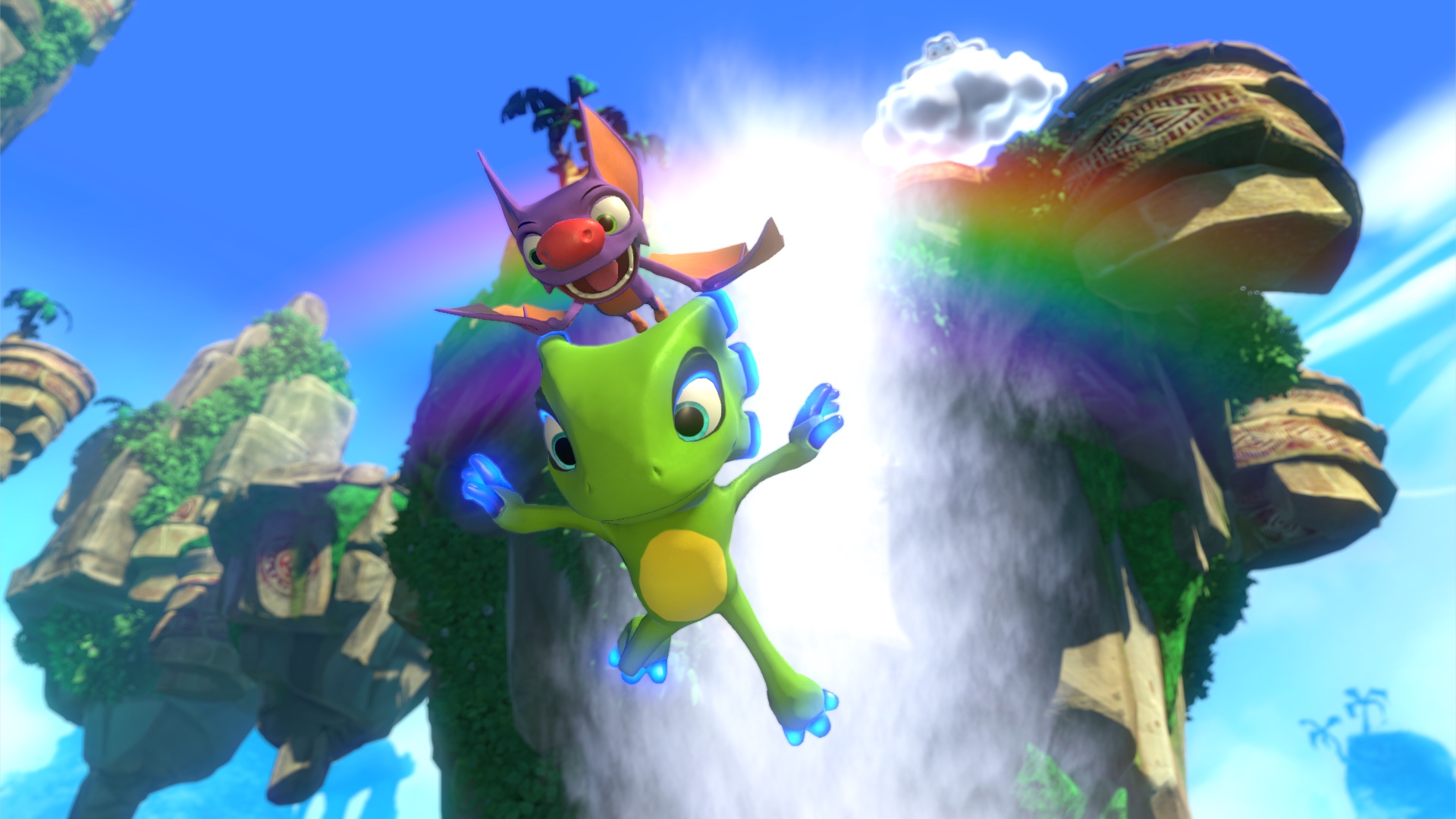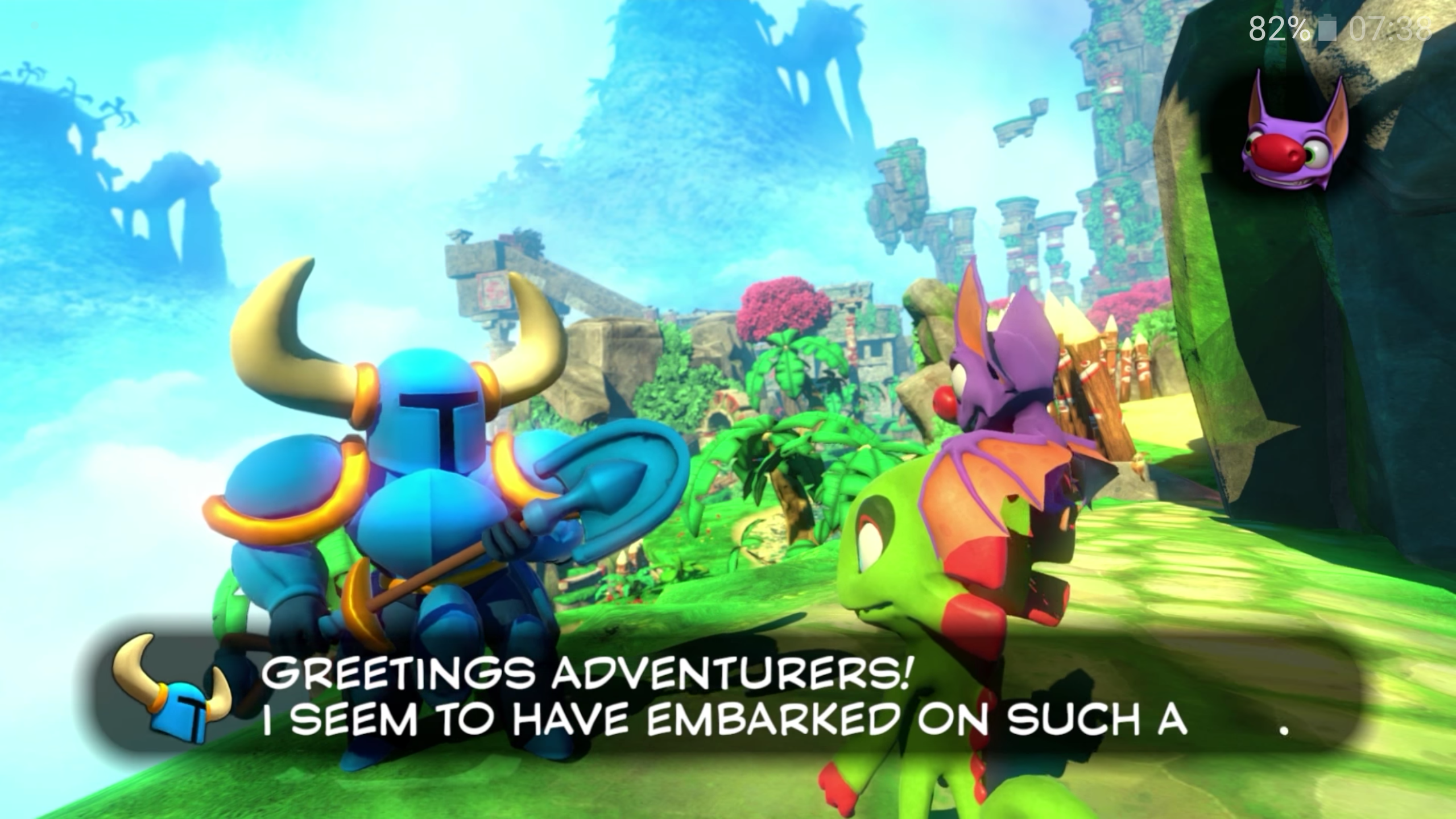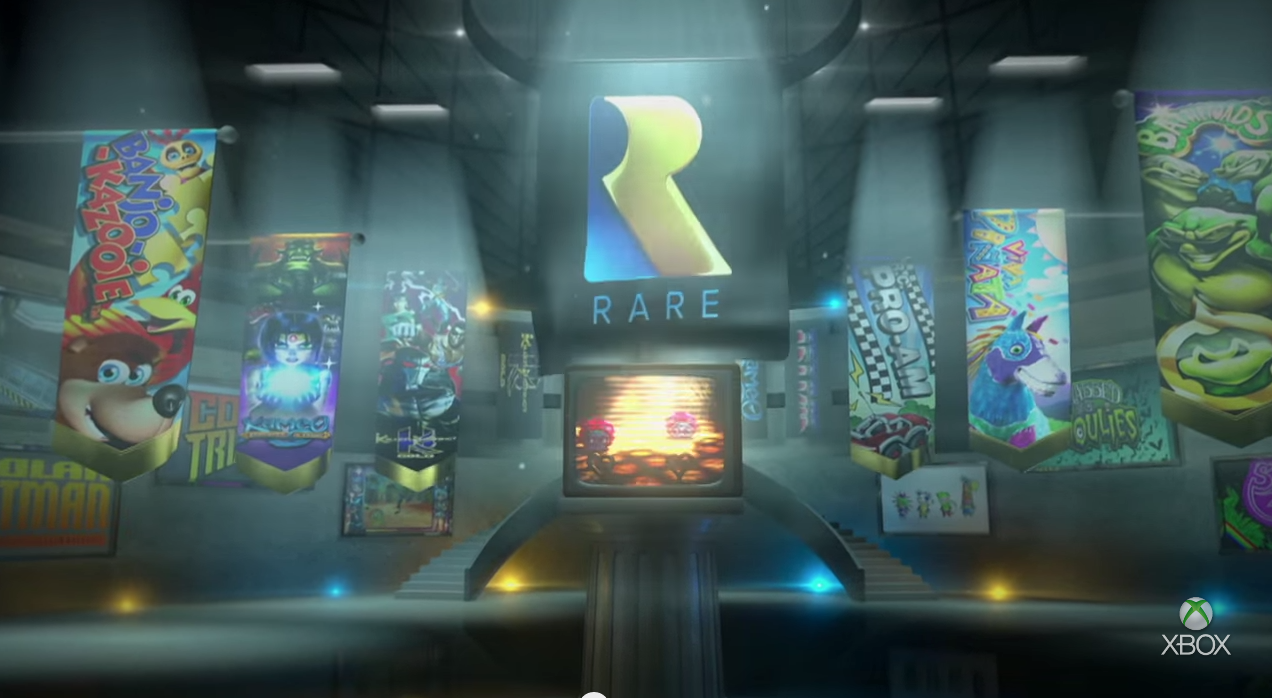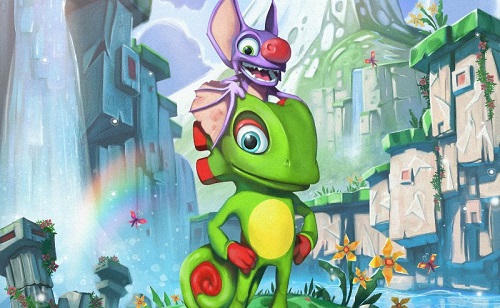
Since Microsoft’s acquisition of Rare in 2002, the company’s Banjo-Kazooie franchise has mostly been on hiatus. Banjo-Kazooie: Nuts & Bolts did release in 2008, but was criticised for focusing on vehicle construction rather than the platforming which the series was known for. With Microsoft and Rare seemingly uninterested in pursuing a proper sequel, an opportunity presented itself for fans to fund a spiritual successor, Yooka-Laylee, via Kickstarter. And thankfully it has paid off – developer Playtonic Games (which itself is staff by several ex-Rare devs) has produced a magnificent game which not only captures the spirit of the Banjo-Kazooie franchise, but also stands as its own product. Yooka and Laylee are fast tracked to becoming just as iconic as the famed bear and bird duo.
Yooka-Laylee stars the titular duo Yooka, a green chameleon, and Laylee, a purple bat. The duo have just finished moving into a shipwreck where they have uncovered a mysterious golden book. Nearby, an evil corporation called Hivory Towers begins sucking up all the world’s books in hopes of finding a special magical book capable of rewriting reality. Headed by Capital B and Dr Quack, the book they’re after happens to be the one possessed by Yooka and Laylee. As the book is sucked up its pages are torn out and scattered across the Hivory Towers headquarters, which Yooka and Laylee set out to recover.
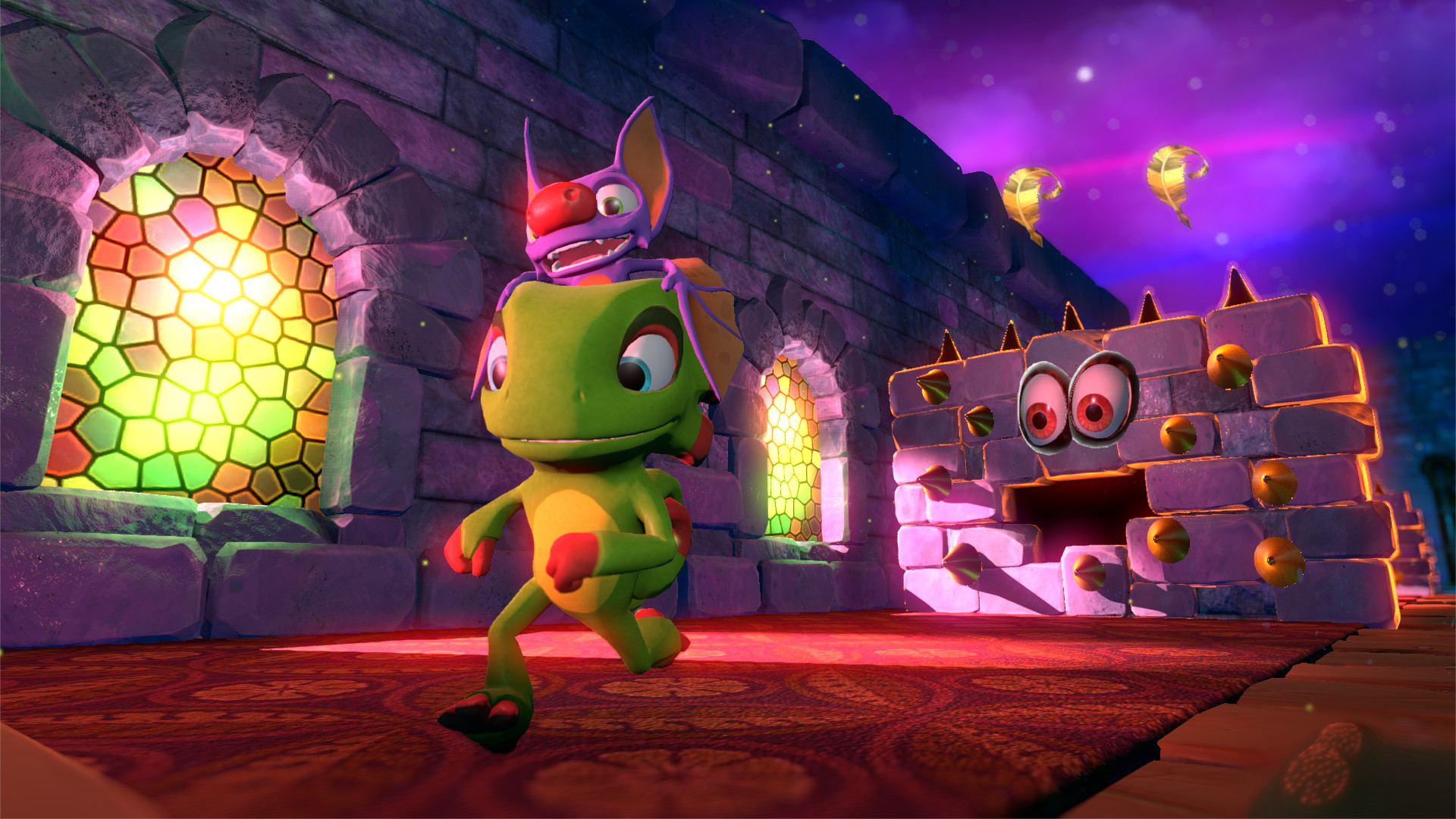
The story is straightforward and rarely expanded throughout your adventure, it’s just there to set the scene and give players their main objective. But what Yooka-Laylee lacks in storytelling, it makes up for with a colourful cast of googly-eyed NPC characters. To name a few there is Trowzer the Snake (get the pun?) who is a shonky salesman, Kartos an oldtimer minecart who loves reminiscing of the “good old days”, and Rextro who is an enthusiastic, blocky 64-bit dinosaur with short term memory. Yooka and Laylee themselves feature similar personalities to Banjo and Kazooie – Yooka is the more serious and polite one, while Laylee dishes out some hilarious remarks and insults. Over time you really do fall in love with the characters which helps make the game world feel alive and full of personality.
Much like Banjo-Kazooie and other platformers from the 90’s, Yooka-Laylee is primarily a collect-a-thon platformer. In order to progress through the game, players are required to collect pagies (book pages) which are scattered throughout various worlds. To collect a pagie players often need to complete challengers including defeating a certain number of enemies, winning a race, solving a tile puzzle or completing a fetch quest. The challenges aren’t too difficult, though there are times where you will get stuck and take a few attempts to accomplish a task. Enjoyment of the game comes largely from exploration, so players who are looking for a more action-oriented title may be a little disappointed.
Aside from pagies, worlds also feature health bar and stamina extenders, as well as quills which are used to purchase new moves. At the start of the game players will only have access to standard abilities such as double jump, crouch and basic attacks, but later you can unlock the ability to shoot sonar beams, glide using Laylee’s wings, and use Yooka’s tongue to grapple between platforms. One of the more interesting abilities is having Yooka swallow items and absorb their elemental abilities. For example, if he swallows an ice berry, he can shoot ice bullets at enemies. If he swallows a bowling ball, he will be heavier and won’t be knocked away by strong winds. There’s a lot of variety here and as you unlock more moves you are encouraged to revisit worlds to obtain previously inaccessible pagies. Unfortunately some of the unlockable moves feel like they should have been available immediately from the start. Yooka’s lizard leap, which gives players a jump boost to reach higher areas, would normally be an ability that is available from the start in other platformers. It feels like an artificial way for Playtonic to extend the life of game’s earlier areas, but this is only a minor complaint and doesn’t detract from the overall experience.
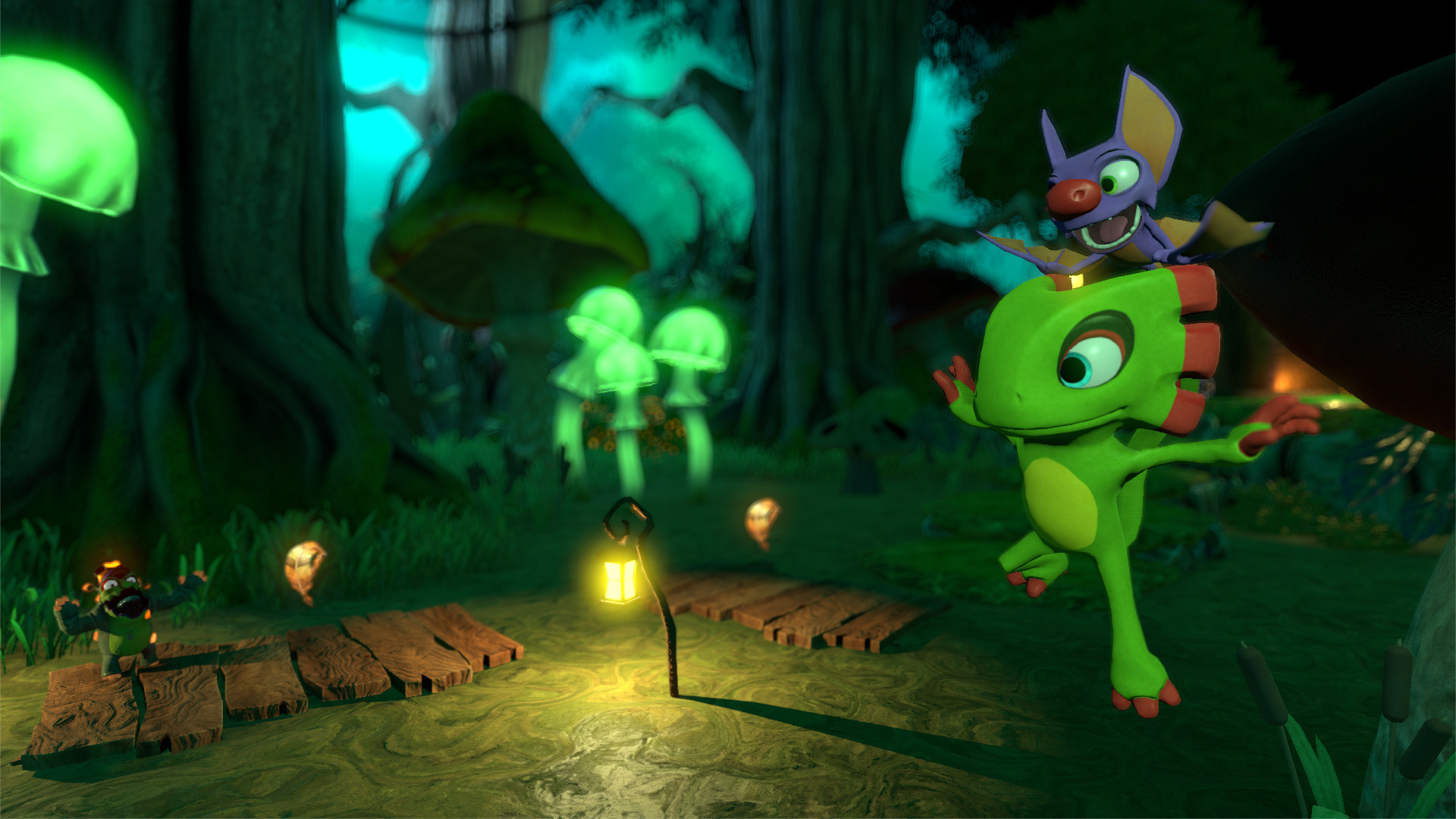
Another similarity players will recognise from Banjo-Kazooie are the ghost writer collectibles, which are the equivalent of jinjos. The ghost writers are cartoon ghosts which are hidden in each world, but to collect them you have to use different tactics. One ghost, for example, must be given something to eat, another is fast and has to be chased, while another has to be beaten in a minor brawl. It adds a twist that makes them a little bit more unique and engaging to collect.
Also featured are transformations for Yooka and Laylee, which include a flower, snowplow, a school of fish and even a helicopter. Most transformations feature a special ability that assist players in completing challenges. The flower transformation can fertilise other plants (along with a few implied sexual innuendos!), the snowplow can crush piles of snow to collect items trapped within, and the helicopter can fire missiles and fly freely throughout a level. Interestingly Laylee has been incorporated into a lot of the transformation designs, instead of being sidelined in a backpack like Kazooie was. Some transformations are more fun than others, but overall it reflects back on some of the more unique traits of the Banjo-Kazooie series and offers a change of pace to the standard gameplay.
Something that is hit or miss are the mini-games featured in Yooka-Laylee. These can be unlocked by finding tokens throughout levels and then redeeming them at Rextro’s arcade cabinets. The mini-games can be played solo or with up to four players locally, and include kart-racing themed challenges, brawl arenas, shooting galleries and auto-runners. The quality of the mini-games are mixed, with some being engaging while others are stinkers. The controls in Kartos Karting for example are not responsive and can cause you to collide into walls. Laylee herself occasionally makes a comment that the mini-game was “terrible”, which suggests they’ve intentionally been designed as a lesser experience for comedic purposes. It doesn’t detract too much from the overall experience, but the mini-games are tied to a pagie so it can get a little overbearing at times and pull you from the otherwise enthralling exploration.
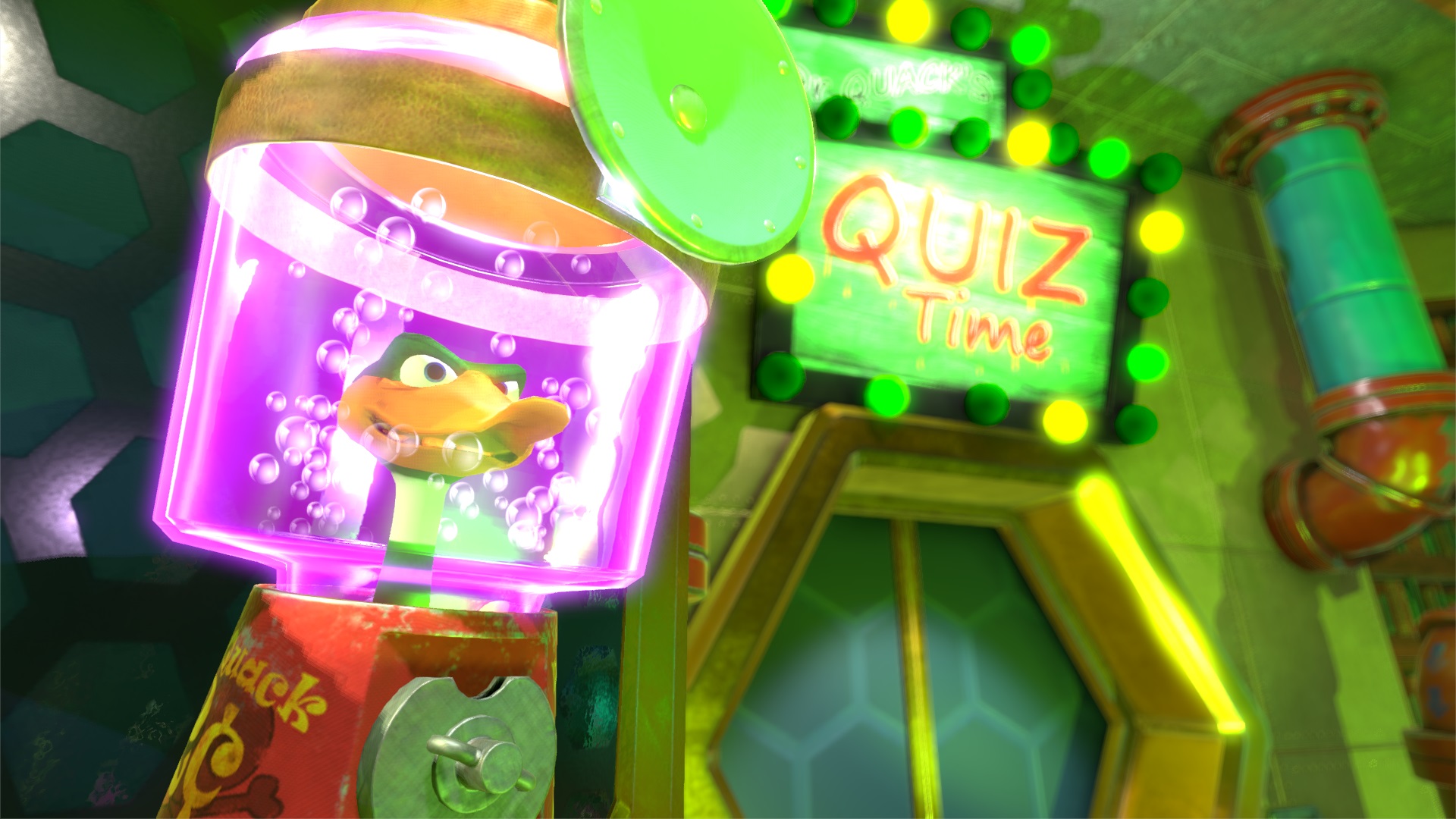
Yooka-Laylee has an interesting concept in how it approaches its levels. Players can unlock a basic form of the world, as well as an expanded form that adds new areas and challenges. It feels more open-ended as it gives players the choice to collect a few pagies and then move on to the next environment or expand their current location. The worlds that players will encounter include Tribalstack Tropics which features Aztec-like temples and jungle areas, Glitterglace Glaciers which is a snowy mountain range with caves and ice castles, Captial Cashino which is a giant casino-themed level, a swamp level called Moodymaze Marsh, and a “sea of stars” world called Galleon Galaxy. Even Yooka-Laylee’s hub world, Hivory Towers, acts in a similar vein to Gruntilda’s Lair from Banjo-Kazooie, complete with quizzes hosted by Dr Quack. There’s certainly a lot of variety on offer here, and with each main world containing 25 pagies and 200 quills to collect, you will easily be spending several hours exploring every nook and cranny. Having said this, at time environments can appear a little bare when you’re between challenges and collectibles, but it never gets to the point where you’re bored and have nothing to keep you occupied.
Anyone who played the Toy Box demo may be concerned about how the controls have turned out in the final game. Thankfully the controls are tight and responsive; jumping is a bit floaty but you should have no trouble navigating platforms. There is one move where Yooka rolls into a ball which lets players traverse slopes and move faster throughout a level. Naturally a ball doesn’t have as much traction as two feet, so in-game you’re a bit slippery against surfaces. It just adds to the realism and levels have been designed with the mechanic in mind. Unfortunately the camera can be quite annoying as at times it randomly changes perspective which can mess you up if you’re jumping between platforms. Also the camera has a tendency to get stuck between objects in crowded areas. It’s certainly not broken and doesn’t make Yooka-Laylee unplayable, but it is a slight frustration you will encounter.
At the time of writing I had invested in approx. 23 hours of game time with Yooka-Laylee. I have seen all five worlds, reached the final boss and obtained 110 of the game’s 145 pagies. If you’re playing without a game guide then you’ll definitely be able to cover a solid 30+ hours before you get 100% completion.
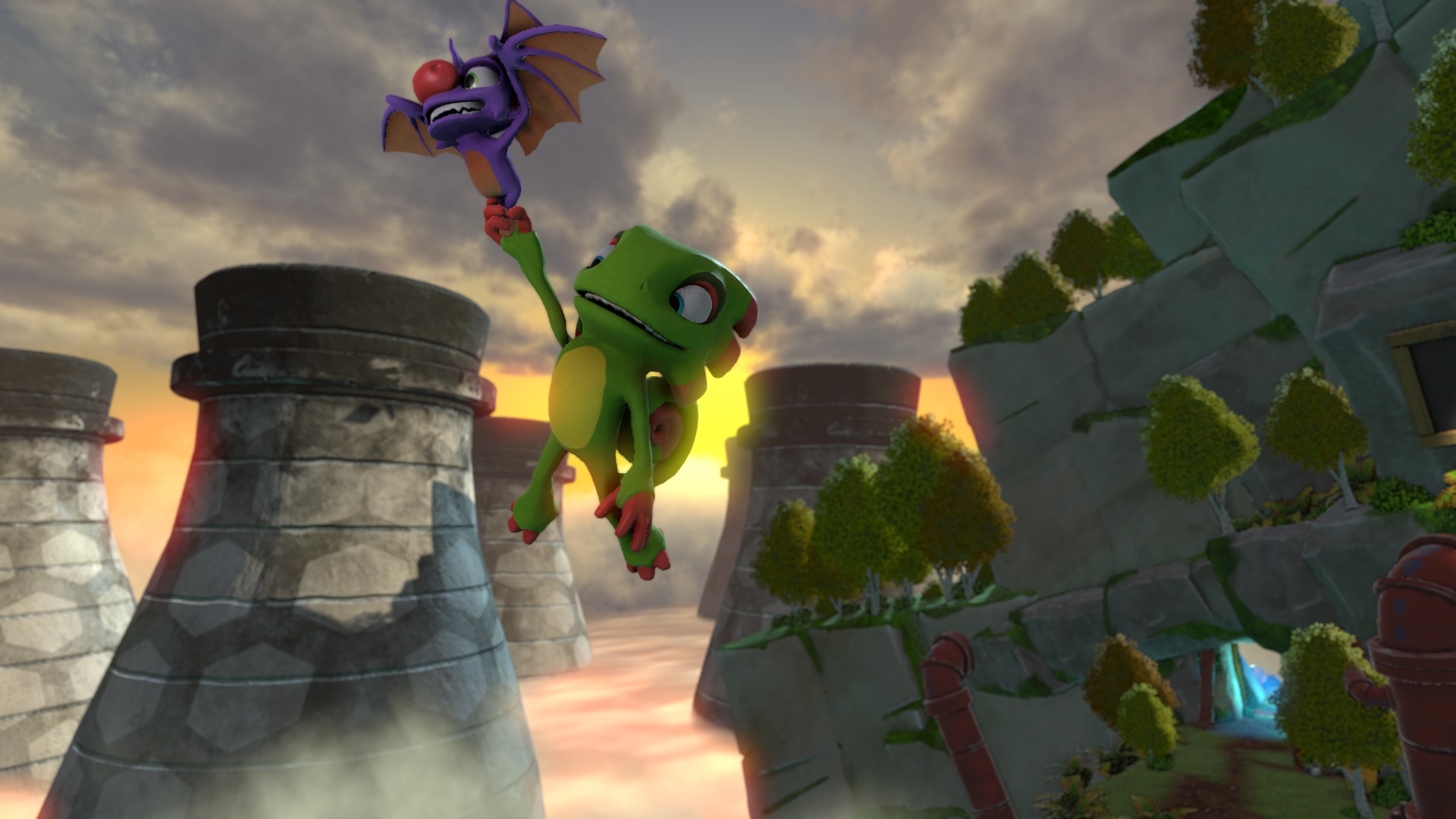
Just because Yooka-Laylee is inspired by classic N64 platformers doesn’t mean its graphics represent the era; the game is beautiful to look at. The world is full of colour and cartoony in appearance. The animations of Yooka and Laylee in particular are also detailed and cute – if Yooka falls Laylee will gently pick him up, and if you stay idle for too long Laylee will cover Yooka’s eyes and the pair will start fighting. It’s disappointing, then, that the game does suffer from some framerate issues. On the Xbox One version I played, it was common to see dips in speed whenever there were lots of particle effects happening on screen or when there were a lot of objects moving in the background. This was particularly noticeable in the Capital Cashino world and at a few key spots in Hivory Towers. The frame rate drops are not as frequent as other recent releases and it doesn’t spoil the fun too much, but it is noticeable and is a mark on what is otherwise a great game.
Yooka-Laylee’s soundtrack is also inspiring, invoking a sense of traditional 64-bit era platformers with simple happy tunes that reflect on their world’s theme. The music isn’t quite as memorable as Banjo-Kazooie’s soundtrack, but instead of taking centre stage each piece is designed to compliment the environment. In contrast, the music for the mini-games is a little more chaotic, perhaps to invoke excitement while playing with friends.
Yooka-Laylee has always been marketed as a spiritual successor to the Banjo-Kazooie franchise, and while the similarities are there the final product ultimately stands on its two feet. There are more collectibles than appeared in Banjo-Kazooie, there’s the unique concept of expanding worlds to unlock new areas and challenges, and in general the game is engaging and fun to play. Since Microsoft and Rare don’t seem interested in returning to the glory days of the 3D platformer, Yooka-Laylee is a worthy alternative that will tickle the fancy of both old and new fans. Bring on the (hopefully) inevitable sequel!
- Colourful characters and world - Lots of collectibles - Glorious return of the 3D platformer
- Frame rate issues - Annoying camera system

